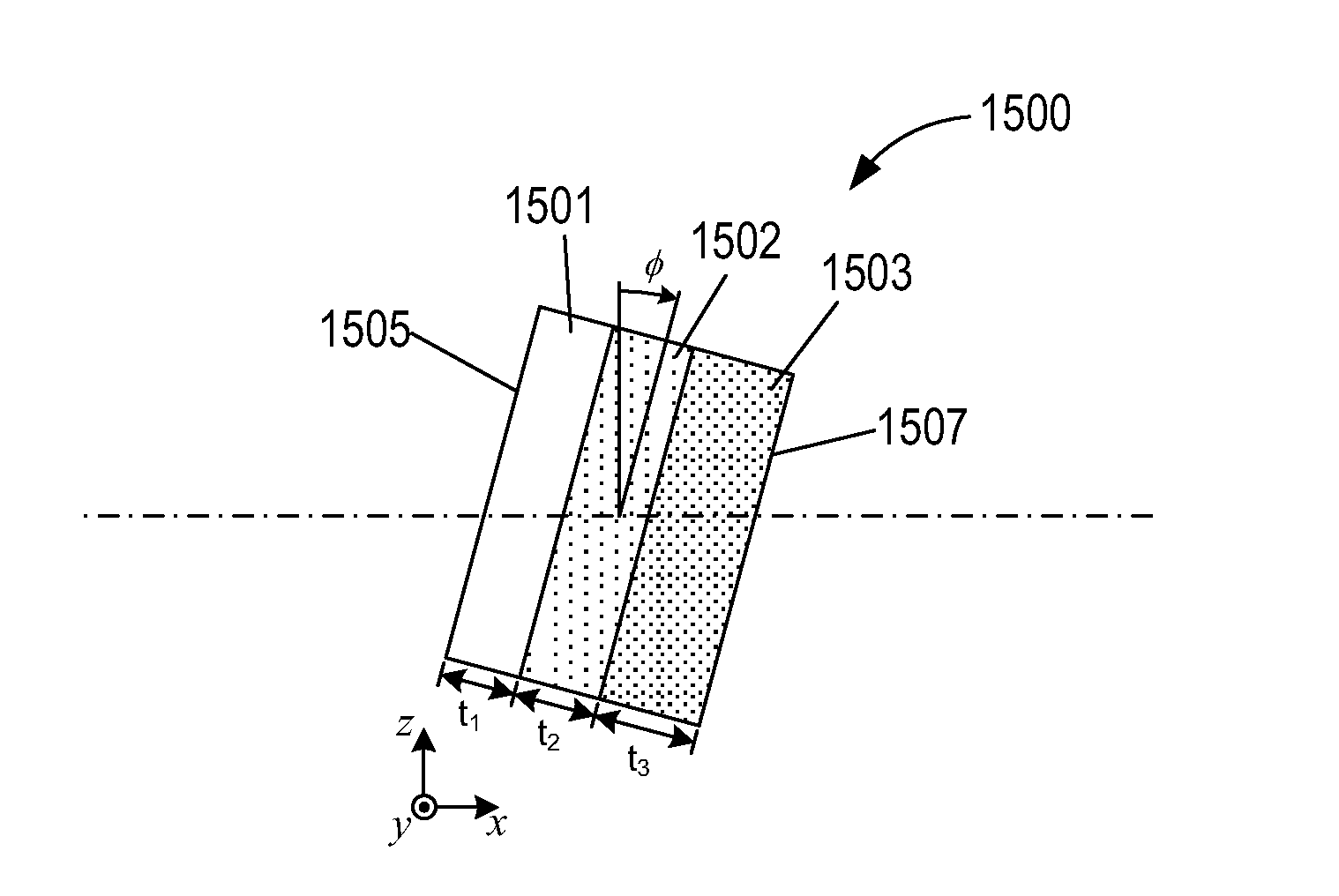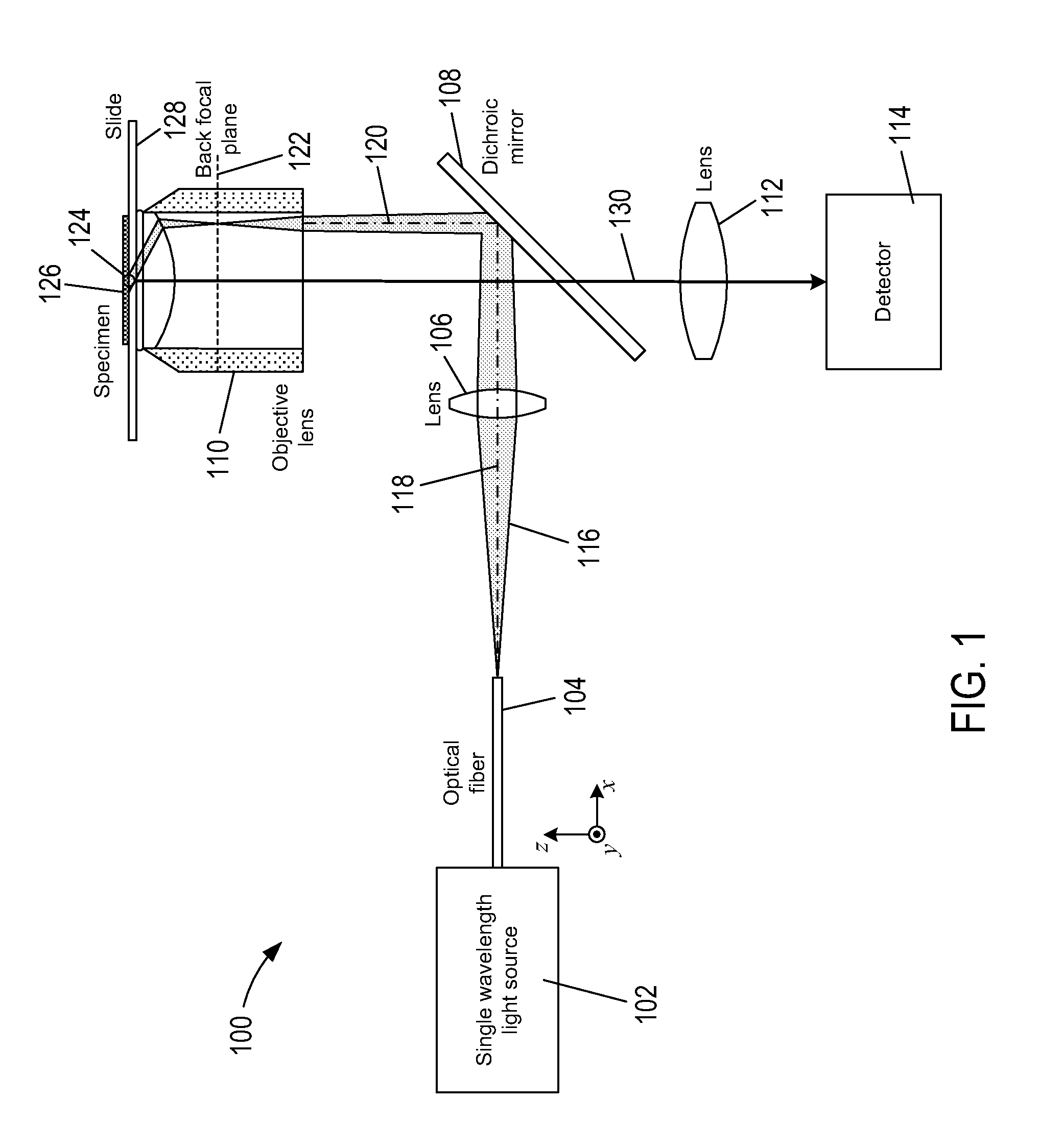Systems for chromatic aberration correction in total internal reflection fluorescence microscopy
a technology of total internal reflection and fluorescence microscopy, applied in the field of fluorescence microscopy, can solve the problems of increasing the cost of an objective-based tirf microscope, chromatic aberration in the beam, and several challenges of objective-based tirf microscopes
- Summary
- Abstract
- Description
- Claims
- Application Information
AI Technical Summary
Problems solved by technology
Method used
Image
Examples
Embodiment Construction
[0023]A general description of two kinds of problems associated with chromatic aberrations created in objective-based total internal reflection fluorescence (“TIRF”) microscopy is presented in a first subsection. A description of various correction elements that can be incorporated into objective-base TIRF microscopy instruments to correct various types of chromatic aberrations is presented in a second subsection.
Two Problems Created by Chromatic Aberrations in Multiple-Wavelength Objective-Based TIRF Microscopy
[0024]FIG. 1 shows a schematic representation of an example TIRF microscopy instrument 100 that does not include a correction element. Note that the instrument 100 is not intended to represent all of the various types of TIRF microscopy instruments. There are many different types of TIRF microscopy instruments and corresponding optical paths. Instrument 100 is also not intended to represent the optical paths within all the different, well-known variations of TIRF microscopy i...
PUM
 Login to View More
Login to View More Abstract
Description
Claims
Application Information
 Login to View More
Login to View More - R&D
- Intellectual Property
- Life Sciences
- Materials
- Tech Scout
- Unparalleled Data Quality
- Higher Quality Content
- 60% Fewer Hallucinations
Browse by: Latest US Patents, China's latest patents, Technical Efficacy Thesaurus, Application Domain, Technology Topic, Popular Technical Reports.
© 2025 PatSnap. All rights reserved.Legal|Privacy policy|Modern Slavery Act Transparency Statement|Sitemap|About US| Contact US: help@patsnap.com



